Charles Lyell was probably the most famous geologist alive in the mid-nineteenth century. When a young Charles Darwin set out on the HMS Beagle in 1831, the ship’s captain handed him a copy of Lyell’s Principles of Geology. Darwin soon became a “zealous disciple,” describing his own books as coming “half out of Lyell’s brains” in a letter to the Scottish geologist Leonard Horner.
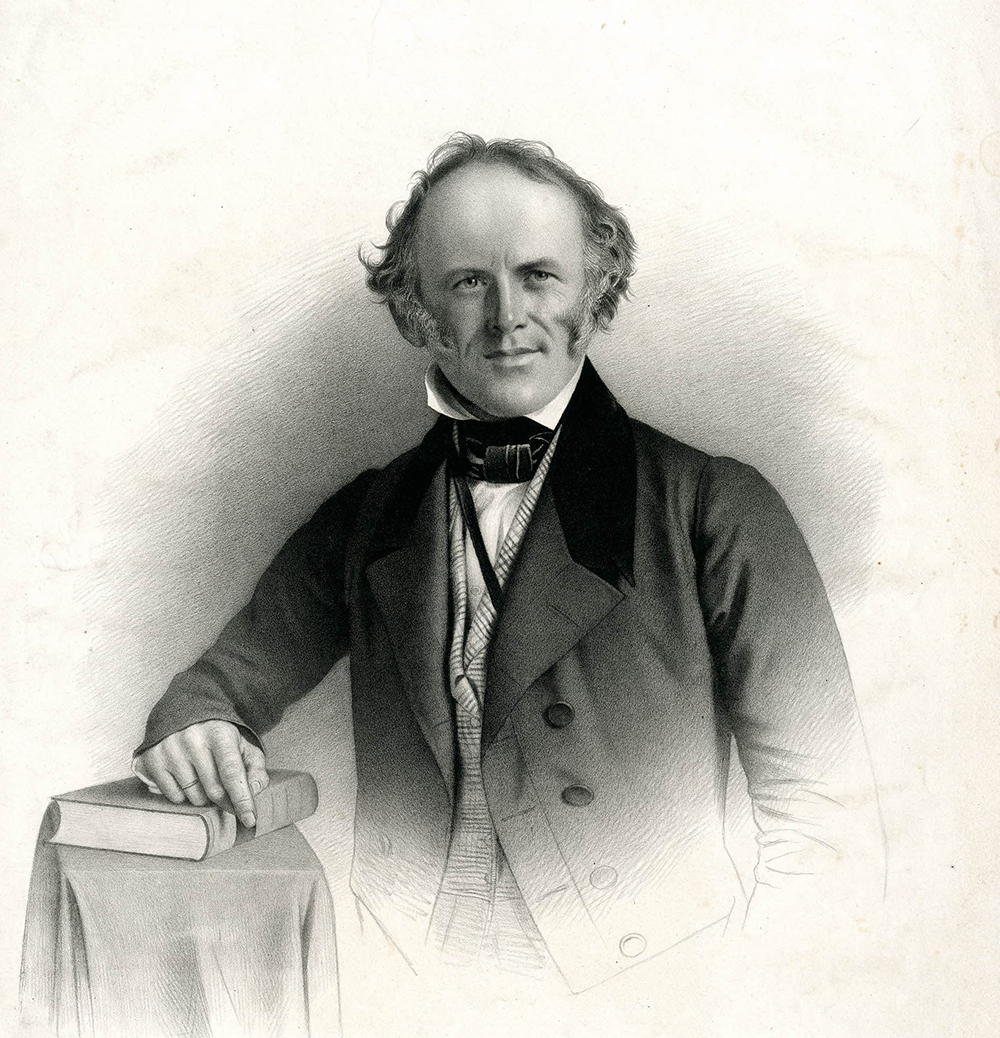
So it’s remarkable that in 1856, Darwin wrote Lyell, “If there be a lower region for the punishment of geologists, I believe, my great master, you will go there.” It wasn’t some sacrilege specific to Lyell that had moved Darwin to such passionate judgment; it was more the behavior that Lyell enabled among his students. Lyell was a “gradualist” who saw the submergence and resurfacing of land as continuous and cyclical. Quoting Aristotle, he wrote,
The distribution of land and sea in particular regions does not endure throughout all time, but it becomes sea in those parts where it was land, and again it becomes land where it was sea, and there is reason for thinking that these changes take place according to a certain system, and within a certain period.
For Lyell, continents could rise and fall, but they couldn’t move.
Sunken continents and land bridges that had crumbled into the sea became the most popular solution to a riddle that scientists of all stripes were desperate to solve. Darwin was not averse to the occasional theory of a lost land bridge himself, but the fervor with which his fellow scientists conjured up continents infuriated him. In the same letter to Lyell, he wrote,
Here poor Forbes made a continent to North America and another (or the same) to the Gulf weed; Hooker makes one from New Zealand to South America and round the world to Kerguelen Land. Here is Wollaston speaking of Madeira and Porto Santo “as the sure and certain witnesses of a former continent”…And all this within the existence of recent species!
Philip Lutley Sclater was one of these continent creators. Like many other scientists, the zoologist was shocked that similar species were separated by distance and water and dissimilar species were close together. Sclater was specifically perplexed by the fauna of Madagascar. There are dozens of different lemur species on Madagascar but none at all on mainland Africa, less than a thousand miles away. The bearded Englishman was aware of related creatures in India and Southeast Asia and the fact that lemurs were closer relations to New World simians in the Americas than to Old World simians in Asia. In 1864 he proposed that a sunken landmass must have linked Madagascar with India in the past and christened it Lemuria, after the primates that lay at the center of his quandary. Sclater could have had no inkling of the strange and myriad pathways this idea would travel, morphing and mutating from scientific theory to mystical prophecy to political rallying cry.
In 1870, Ernst Haeckel promoted Sclater’s lost continent from lemur land bridge to potential birthplace of the human race. “By assuming this Lemuria to have been man’s primaeval home,” he wrote in the second edition of Natürliche Schöpfungsgeschichte (History of Creation), his controversial and popular elaboration on Darwin’s theories, “we greatly facilitate the explanation of the geographical distribution of the human species by migration.” Haeckel is mostly remembered today for his dazzling illustrations in Kunstformen der Natur (Artforms of Nature), a book of lithographic prints displaying the plethora of living forms in the natural world. But in the nineteenth century, he was a household name, often described as the Darwin of Germany. His popularity eventually took a darker turn. Historians Stephen Jay Gould, Daniel Gasman, and others have argued that Haeckel’s theories of race, evolution, and nature were protofascist and contributed to theories of Nazism in Western Europe.
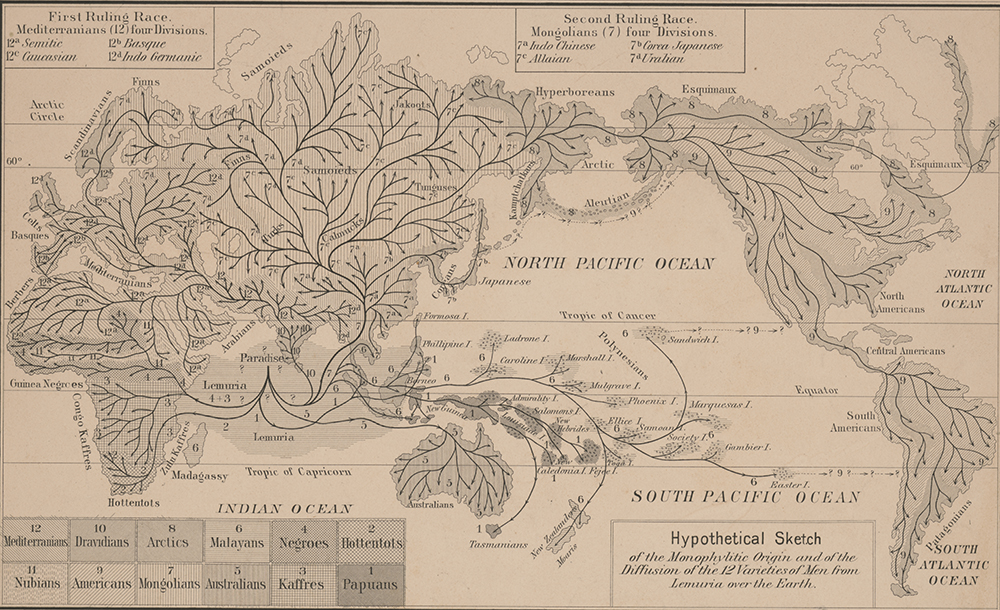
The location of “the cradle of the human race” was a burning question at the time. Haeckel’s reputation helped turn Lemuria into one of the front-runners. Soon respectable figures including Friedrich Engels, E.M. Forster, and H.G. Wells began to make references to the continent in their books. They were followed by some not-so-respectable figures, such as the occultist Helena P. Blavatsky, founder of the Theosophical Society, and the mystical Rosicrucian Harvey Spencer Lewis. Both Theosophy and Rosicrucianism were esoteric spiritual movements that sought to harness ancient lost “Eastern wisdom,” and they rose to great popularity in the late nineteenth and early twentieth centuries. Blavatsky named Lemuria the home of the “third root race,” the first race to take up sexual reproduction and the progenitors of the Atlanteans, who in turn led to the Aryans. The Theosophical Society was founded in New York, but after Blavatsky’s migration to India it shifted operations to the city of Madras (now Chennai) in South India in 1886. There the Theosophists embroiled themselves in the popular movements of the day, including the Indian freedom movement and, more locally, the struggle for an independent state for the Tamil people. The cultural tumult of the times turned out to be a fertile ground for theories of lost continents.
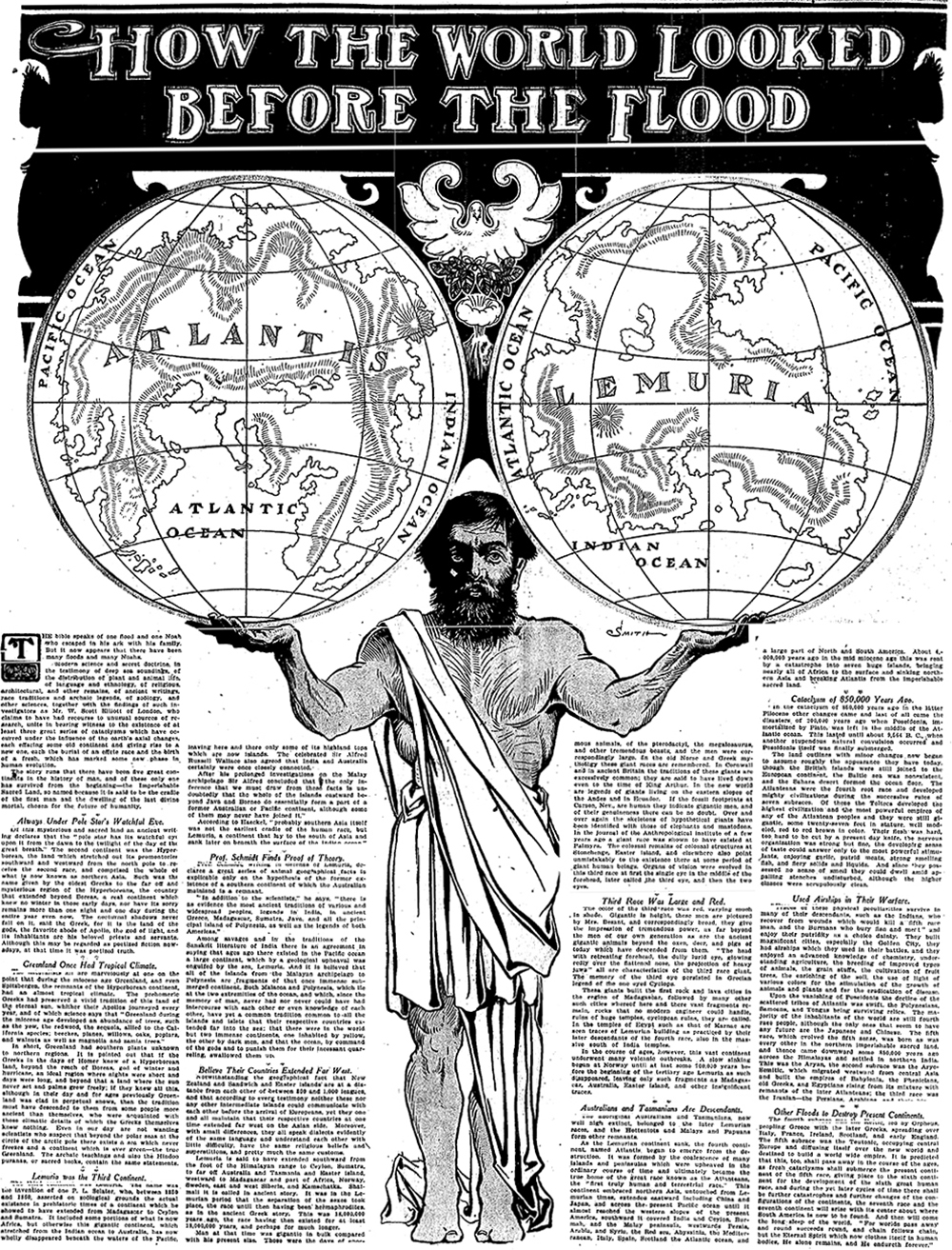
Tamil is a classical language, far older than Latin and yet still spoken by millions today. As a linguistic minority, Tamil reformers worried that Indian independence would simply exchange one form of domination for another. They began a social movement to reinvigorate pride in the Tamil language and reclaim some of their lost cultural memory as a method of resistance against both the British and the Hindi-speaking majority who would dictate much of an independent India’s future. The revivalist movement merged the concept of Lemuria with the submerged kingdom of Kumari Kandam mentioned in sangam literature. Sangam translates to “academy of poets,” and this ancient literature encompasses a huge corpus of Tamil texts—some written more than two thousand years ago—that were rediscovered and published in the nineteenth century. For the Tamil reformers, Lemuria was Kumari Kandam, or the Kumari continent. And, they concluded, the people who lived on this lost continent or land bridge, the supposed birthplace of humanity, spoke Tamil. Between the 1890s and the 1940s, the idea of a lost Tamil homeland would go from being the province of editorials in philosophical journals to a key part of the radical reformulation of Tamil identity.
In her book The Lost Land of Lemuria: Fabulous Geographies, Catastrophic Histories, Sumathi Ramaswamy describes this ache for an alternative history among the Tamil people:
Convinced as they are about the utter state of humiliation and neglect in which their beloved Tamil languishes in colonial and postcolonial India, its devotees have lived out their own lives in the shadow of decline and loss...It is their everyday experience of despair and yearning that powerfully anchors their labors of loss as they fantasize about Lemuria as their former homeland, a place of promise, plenitude, and perfection that had once existed elsewhere but no more.
But alongside the slow metamorphosis of this legend, the science of continental change was also developing, starting the countdown to Lemuria’s demise.
Around 1850, even before Sclater thought up Lemuria, the East India Company set up the Geological Survey of India (GSI). The empire needed fuel, and the East India Company wanted to know where to find it. Thomas Oldham, a Trinity College professor as well as the director of the Ireland branch of the Geological Survey of Great Britain, was appointed the first official superintendent of the GSI. Oldham had a scientific bent of mind and assembled under him a team of young investigators, a group that included two pairs of siblings, the brothers Blanford and the brothers Medlicott.
In their search for coal, Henry B. and Joseph G. Medlicott and Henry F. and William T. Blanford primarily surveyed the Central Provinces and Bengal. This area included most of the current states of Maharashtra, Madhya Pradesh, and Orissa—an area that was home to the Gond tribe and referred to collectively as Gondwana or “the land of the Gonds.” The Gonds are a heterogeneous group consisting of a large number of very disparate tribes and were probably the earliest inhabitants of Central India. The GSI referred to the pattern of stratification they found in the rock of Central India as the Gondwana assemblage or the Gondwana series. It was identified by the ubiquitous presence of the fossilized fern Glossopteris, a fern that could grow up to eight meters tall (notable for the fact that it, unlike most ferns, bore seeds). Because Glossopteris went extinct more than 200 million years ago, the series serves as a time stamp, indicating the age of the rock. The GSI’s findings didn’t take long to reach Europe, where they reached one of the great public intellectuals of the day: Eduard Suess.
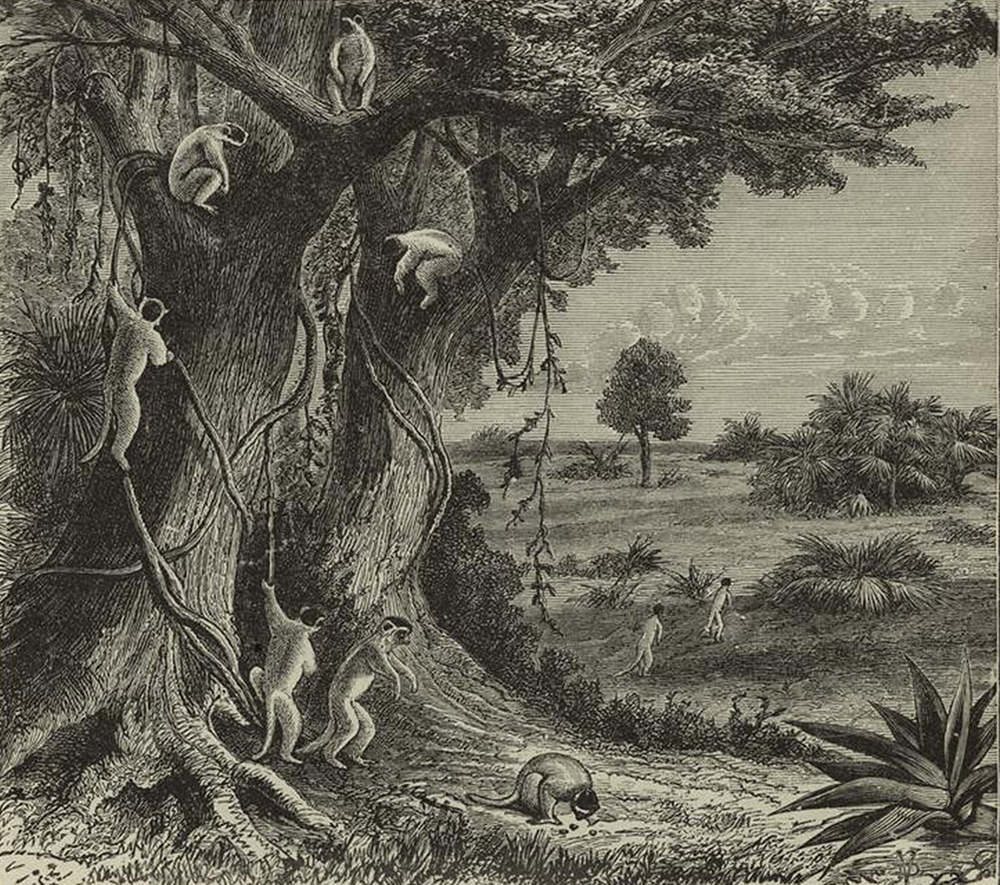
As a young man, Suess manned the barricades during the 1848 revolution in Austria and was imprisoned in 1851 on the suspicion of allegiance to a leader who wasn’t a Habsburg. He was released soon after and joined the Geological Survey of Austria where he studied the Alps. In a sudden leap, he went from being a clerk to a professor. At the University of Austria, he read every geological tract he could get his hands on, piecing together facts from across the world. In 1885 he published the first volume of his magnum opus, Das Antlitz der Erde (The Face of the Earth).
In this book, Suess painted a picture of the world’s first actual lost continent, Gondwanaland—later known just as Gondwana—found through the work done by the Blanfords and Medlicotts. At this point geologists were finding Glossopteris and the Gondwana series were all across the world—South America, Africa, Australia, and even Antarctica (the Antarctica discovery came out five years after Suess’ death). Suess put all these extant pieces together to come up with Gondwanaland. In Das Antlitz der Erde, he described how the continent broke up: the world shrank as it cooled down, and Gondwanaland had fractured along fault lines, with some parts sinking below the oceans. Despite constructing a much truer picture of a lost continent, Suess’ hypothesis for what happened to Gondwanaland wasn’t very far from what Sclater assumed happened to Lemuria.
Suess believed, like others in his time, that the Earth contracted while it cooled, a process that caused certain continents to break apart and become submerged in the oceans. Like most “fixists,” this was as far as Suess was willing to go with regard to the movement of continents. When various scientists proposed that continents could possibly move sideways, it was an idea that was ridiculed and ignored until the twentieth century. Then, between 1915 and 1929, the German meteorologist Alfred Wegener continued to refine iterations of a theory of continental drift. In The Origin of Continents and Oceans, he proposed that about two hundred million years ago there was one massive supercontinent, which he called Pangaea, and everything we see today is a broken fragment of it. While Gondwana was one half of the Pangaea supercontinent, Wegener put the final nail in Lemuria’s coffin by describing something he called the Lemurian Compression, which explained India’s displacement and separation from Madagascar and left “no room...for a submerged Lemuria, in the older sense.”
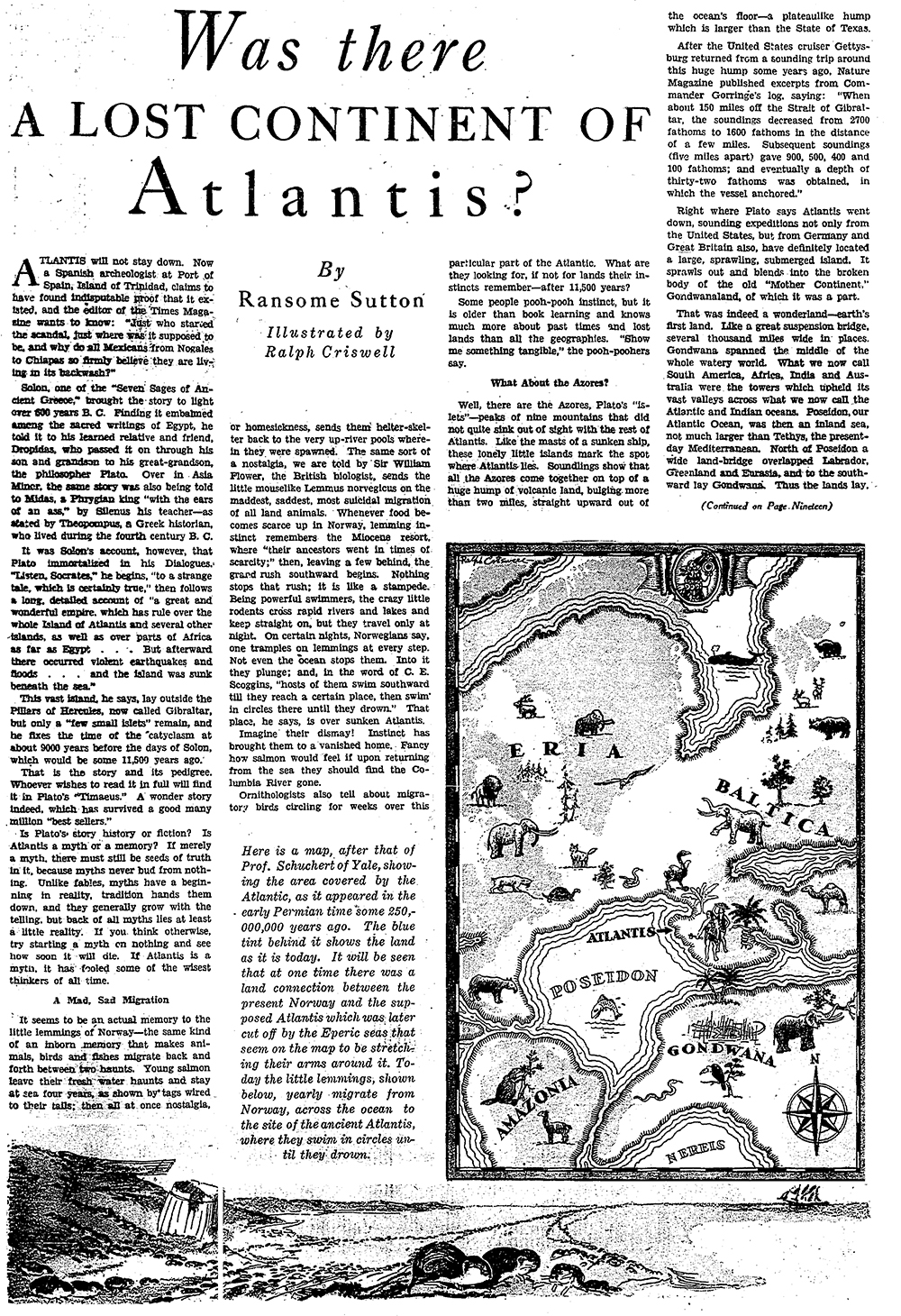
But in the state of Tamil Nadu, Lemuria lived on—and not merely among a vocal fringe but with active support from the state government. In 1981, with support from the Tamil Nadu government and Chief Minister M.G. Ramachandran in particular, the film Kumari Kandam was produced and screened at the Fifth International Conference of Tamil Studies held in Madurai. The purported documentary presented a history of the world that pivoted around the lost Tamil land, language, and literature. Even as recently as 2010, N. Mahalingam, a politician and industrialist, wrote an article in The Hindu, one of India’s oldest and most respected newspapers, peddling a history of the Tamil people that involved Mohenjo-daro, the island of Moo, Lemuria, Easter Island, Atlantis, and Kumari Kandam. It’s debatable how many people actually believed in Lemuria even at the height of the Tamil nationalist movement; today it is mostly invoked ironically as a meme on the internet. People like Mahalingam are the last remnants of a generation for whom Lemuria belonged to a unique political and cultural time in their lives. It was a period of flux and upheaval when identities and histories were shaped and sundered, some parts to remain firm, others to sink and be lost.
The idea of entire continents sinking beneath the oceans may not have the same romance today. As the polar ice melts away, rising sea levels promise calamity to coastal communities from the United States to Madagascar and India. Like the stories of Lemuria and Gondwana, rapid climate change hasn’t been a simple tale of truth overcoming myth but instead a complex interplay of culture, politics, and science that traverses centuries and geographies. Hopefully future historians will get the chance to chronicle it.